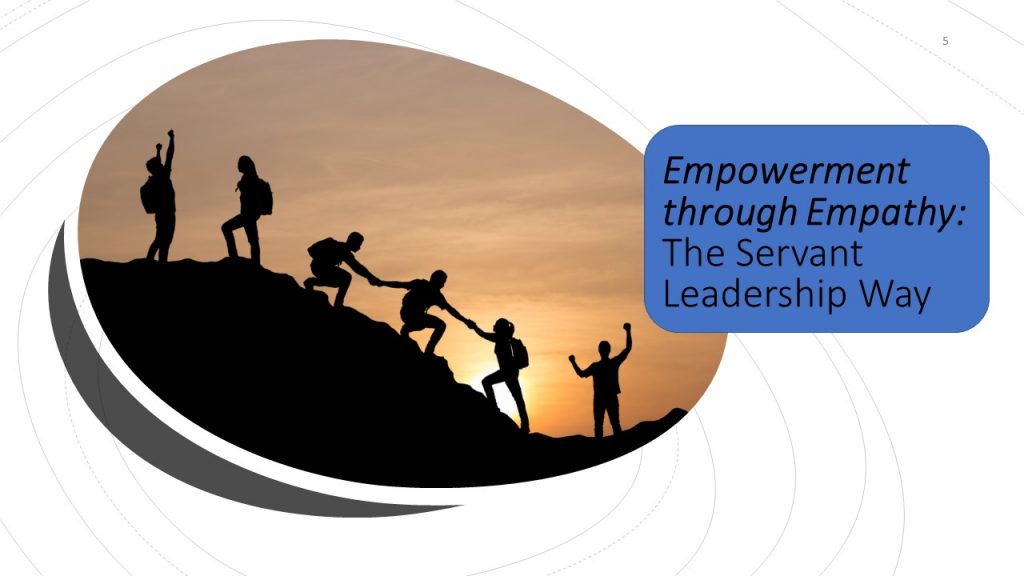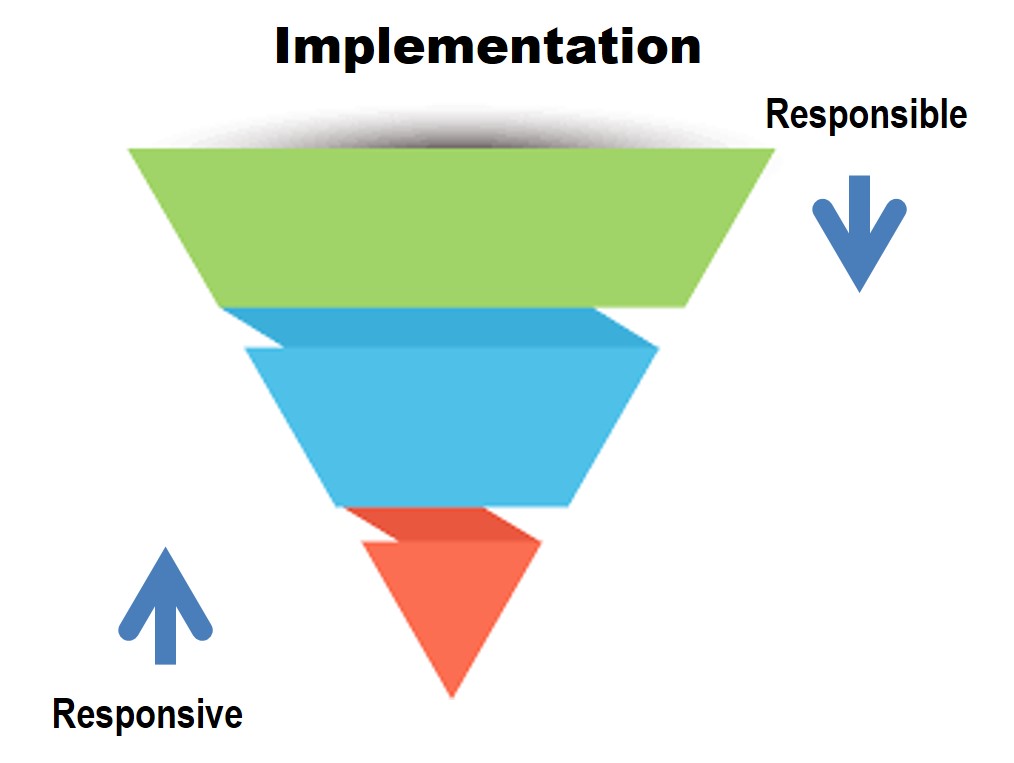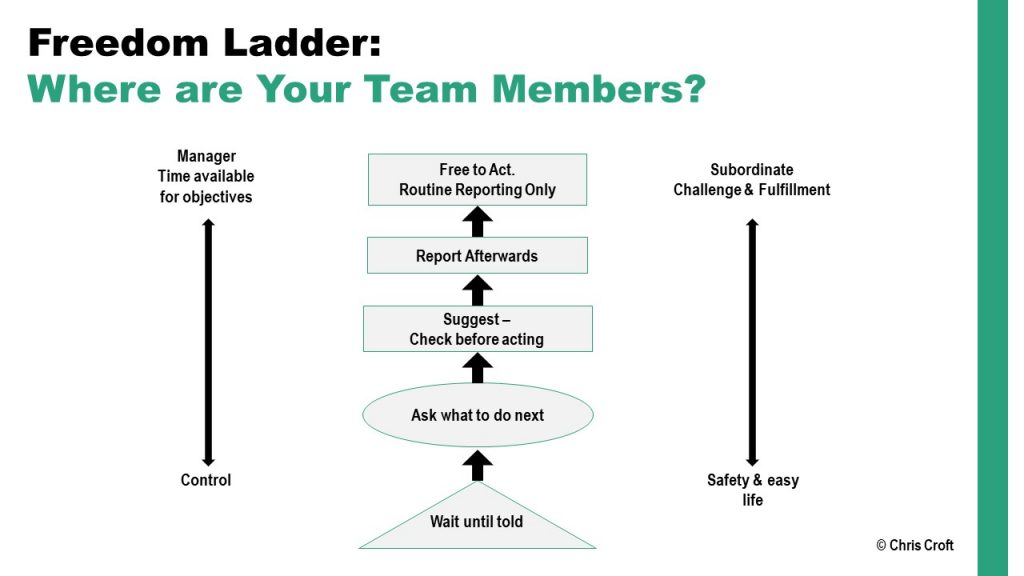Empowerment

In my previous blog I discussed the need for Servant Leaders to be able to dream big and keep boundaries while chasing such dreams. At Leadyne, we call it the behaviour of Demonstrating Conceptual Skills. This is the beginning of great organisations.
So, what is next? Is setting a higher purpose vision and goals enough by itself? The obvious answer is “No”. Visioning is one of the two key leadership roles. The second one is Implementation. During Implementation of the vision, mission, goals and values, Servant Leaders step aside and invert the pyramid. They create a culture where the employees feel they are fully responsible for the implementation of the vision, mission , values and goals. However the employees also know that the leaders have not gone anywhere. They know they can call upon the leaders as a resource when they need. The employees become responsible and the leaders become responsive to the employees’ needs. They serve the employees in fulfilling the organisation’s vision, mission, values and Goals. This concept is called the “Inverted Pyramid” and is an integral part of Servant Leadership Culture.

To make the Inverted Pyramid work, Servant Leaders rely on another of the DEEP BHC behaviours viz; Empowerment. It is a very commonly used word. But let us dig a little deep into it.
Is Empowerment something that you “give” to your followers? Have you heard some leaders claim “I have empowered my team fully.” When Empowerment is something that the leader “gives” to their followers, the leader is implying that the power remains with me and I give you the part of that power. This is like claiming that you are most humble person in the whole wide world. Empowerment is not something given, but Empowerment is a climate that is felt by the followers. When they feel that they are Empowered to make decisions, even make mistakes, that is true empowerment.
Chris Croft talks about the Freedom Ladder. Servant Leaders need to make conscious efforts to bring their people up the ladder, not by mere words but by appropriate behaviour. Let us take this conversation for example.

Quote
John: Hi Vinod. I found a problem with the code that we were supposed to release for the client yesterday and I have solved it by making some adjustments. I have released it to the clients and met the timelines committed. Just wanted to let you know and see what you think
Vinod: Thanks John. You did well. May I suggest that in future, you pass such things through me before you release it to the clients?
Unquote
What do you think just happened here? John was at level 4 of the Freedom ladder and wanted to operate from there. Vinod’s reaction was a very clear message that Vinod wants John to be at level 3 of the Freedom ladder. What do you think John will do next time when faced with a situation like this? John is going to suggest and wait for Vinod’s approval before he does anything. In other words, knowingly or unknowingly Vinod has “pushed” John to Level 3 of the Freedom Ladder. This is what happens when the leader is not sensitive to the feelings of the team members while responding, even when the leader considers himself/ herself as am “empowering” leader.
Therefore, at Leadyne, we map the behaviour of Empowerment to the attribute of Empathy. Unless as a leader is able to put himself/herself in the shoes of the employee and understand how they feel, empowerment cannot happen. It is important for leaders to understand what the team members think and feel. That is why I said at the beginning that Empowerment is a climate that the team member feels.
True empowerment needs that you demonstrate behaviours that will help and encourage your team members to operate from Level 4 or level 5 of the Freedom ladder. Sure, there are risks in doing this. But in the long run, it will become a much stronger team and you as a leader will have a lot of time in your hands for doing higher purpose activities.
Come join the Servant Leadership Movement and learn how to make your teams feel empowered.
_____________________________________________________

This Article is written by Dr. Madana Kumar, PhD, UST’s own Servant Leadership Evangelist. You can contact him here, or connect with him here.
2 replies on “Empowerment through Empathy: The Servant Leadership Way”
Hello my friend! I wish to say that this post is awesome, nice written and include approximately all significant infos. I would like to see more posts like this.
I love reading a post that can make men and women think. Also, many thanks for allowing for me to comment!